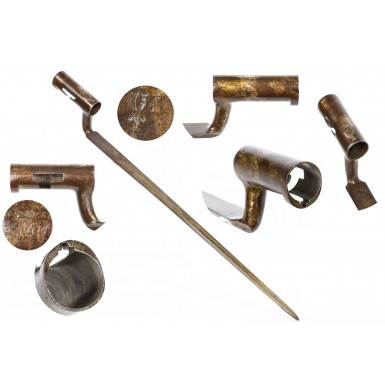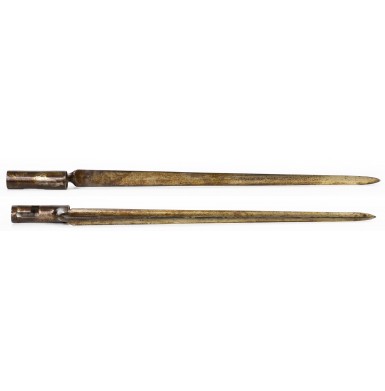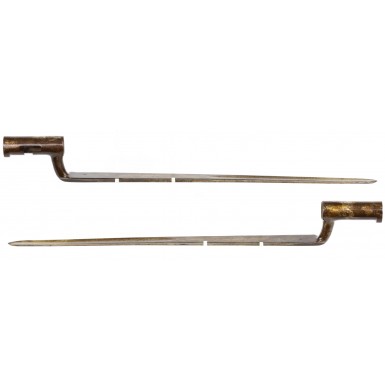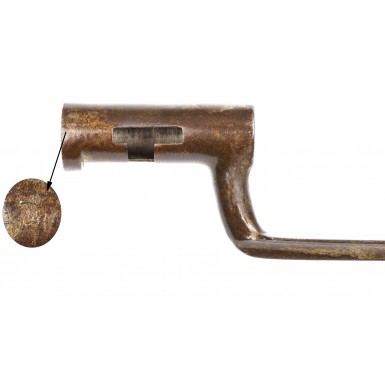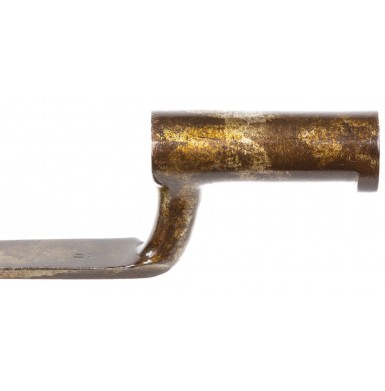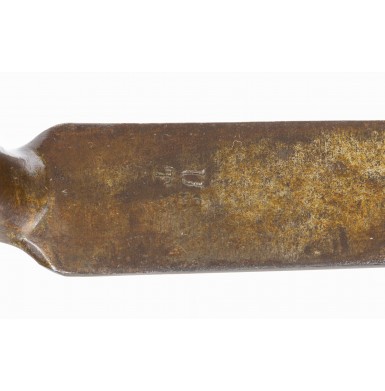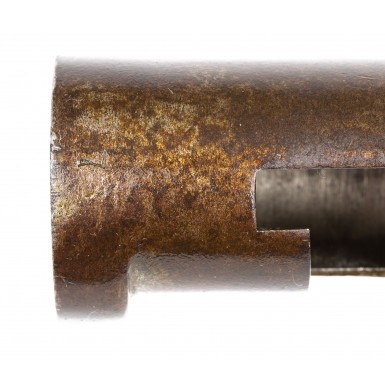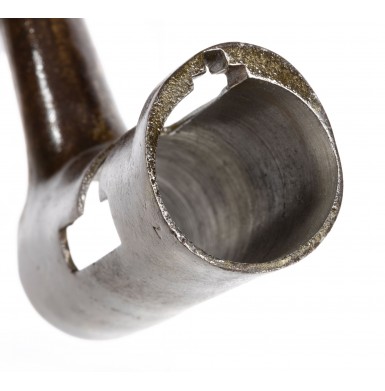Rare US Socket Bayonet for the Model 1817 Common Rifle - Reilly B74
- Product Code: EWB-2721-SOLD
- Availability: Out Of Stock
-
$0.00
This interesting US socket bayonet that appears to be a standard US Model 1816/22/27 bayonet at first glance. However, when the rear of the socket and the bridge are inspected, it is clear that the bridge has been cut to clear a front sight blade, suggesting the bayonet saw use on a rifle. In most respects, the bayonet conforms to standard 1816 type bayonet dimensions, with a nominally 16” blade that has a 7” face flute, a 3” socket with the usual “T” mortise and 1 1/8” muzzle to stud distance. However, the muzzle diameter of the bayonet does not correspond to the usual .830 nominal diameter of an 1816 musket bayonet. The socket is larger, measuring a nominal .857”. A nearly identical bayonet is shown in Robert Reilly’s seminal work American Socket Bayonets and Scabbards as Figure B74, depicted on page 60 and described on page 54. It is included with a group of bayonets with similar bridges, cut for a front sight blade. Reilly hypothesizes that the bayonets are for use on US Model 1817 Common Rifles that had been altered to percussion and were later altered accept a bayonet. The only necessary alteration would have been to change out the front sight to a musket style blade and base combination that could also serve as a lug for the angular socket bayonet. Like other US Rifles from the first half of the 19th century, with the noted exception of the Hall Rifle, the Common Rifle was not originally intended to accept a bayonet. However, during the decade leading up to the American Civil War, a large number of US rifles in inventory, primarily Model 1841 “Mississippi” Rifles, were modified to accept either a socket or a saber bayonet.
Reilly’s example that is shown in the book is noted as having a nominal socket diameter or .858” and is marked with a mating number behind the mortise cut at the rear of the socket. His bayonet is numbered 94, while this one is marked 73. Reilly’s example is marked "US / TA" on the face of the blade and this one is marked the same way, although the “A” is not visible, and the “S” is weak. This appears to be the result of a poorly struck die mark. The “TA” mark is that of Springfield Arsenal bayonet forger Timothy Allen, who worked at Springfield during the second quarter of the 19thcentury.
The bayonet is in about VERY GOOD+ overall condition with mostly smooth metal and a gently oxidized freckled brown patina on most of the surfaces over what appears to have been a period tinned finish that has thinned and worn. There is more of the old thinning tin on the blade of the bayonet with the socket having a richer, thicker brown patina. There is some very lightly scattered oxidized surface roughness on the metal and some small areas of minor pinpricking here and there. As noted, the face of the blade is marked US / TA with the “S” rather weak and the “A” illegible. The rear edge of the socket is stamped with the mating mark 73, with the “3” a little more weaking stamped due to the roundness of the socket.
This is a nice, solid example of a scarce US Model 1817 Socket Rifle Bayonet. The bayonet conforms to the Reilly description and dimensions and is only 21 numbers from the bayonet illustrated in his book. This is a scarce US socket bayonet from the pre-Civil War period and would be a fine addition to an advanced US bayonet collection or as an accessory for your US Model 1817 Common Rifle with a musket style combination front sight and bayonet lug.
SOLD
Tags: Rare, US, Socket, Bayonet, for, the, Model, 1817, Common, Rifle, Reilly, B74

